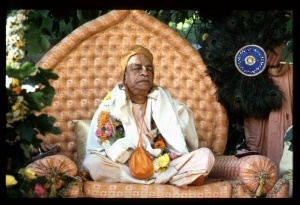CC Madhya 9.199 (1975)

A.C. Bhaktivedanta Swami Prabhupada
TEXT 199
- setubandhe āsi' kaila dhanustīrthe snāna
- rāmeśvara dekhi' tāhāṅ karila viśrāma
SYNONYMS
setubandhe āsi'-coming to Setubandha; kaila—did; dhanuḥ-tīrthe snāna—bathing at the holy place known as Dhanustīrtha; rāmeśvara dekhi'-visiting the holy place Rāmeśvara; tāhāṅ—there; karila viśrāma—took rest.
TRANSLATION
Śrī Caitanya Mahāprabhu then went to Setubandha [Rāmeśvara], where He took His bath at the place called Dhanustīrtha. From there He visited the Rāmeśvara temple and then took rest.
PURPORT
The path through the ocean to the islands known as Mandṇḍapam and Pambam consists partly of sand and partly of water. The island of Pambam is about eleven miles long and six miles wide. On this island, four miles north of Pambam Harbor, is Setubandha, where the temple of Rāmeśvara is located. This is a temple of Lord Śiva, and the name Rāmeśvara indicates that he is a great personality whose worshipable Deity is Lord Rāma. Thus the Lord Śiva found in the temple of Rāmeśvara is a great devotee of Lord Rāmacandra. It is said, devī-pattanam ārabhya gaccheyuḥ setu-bandhanam: "After visiting the temple of the goddess Durgā, one should go to the temple of Rāmeśvara."
In this area there are twenty-four different holy places, one of which is Dhanustīrtha, located about twelve miles southeast of Rāmeśvara. It is near the last station of the South Indian Railway, a station called Ramnadā. It is said that here, on the request of Rāvaṇa's younger brother Vibhīṣaṇa, Lord Rāmacandra destroyed the bridge to Laṅkā with His bow while returning to His capital. It is also said that one who visits Dhanustīrtha is liberated from the cycle of birth and death, and that one who bathes there gets all the fruitive results of performing the yajña known as agniṣṭoma.